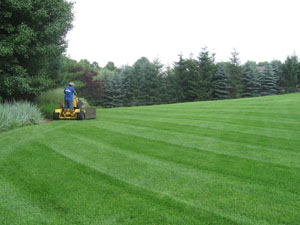Have you ever wondered when the right time is in New Jersey to apply fertilizer to your yard or whether 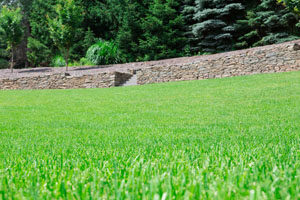 it’s ok to cut the grass really short? To help Bergen County Homeowners get their spring and summer lawn care off to a great start Horizon Landscape offers these myth-busting tips in celebration of National Lawn Care Month.
it’s ok to cut the grass really short? To help Bergen County Homeowners get their spring and summer lawn care off to a great start Horizon Landscape offers these myth-busting tips in celebration of National Lawn Care Month.
Myth #1: You can water your lawn and landscape any time of day.
Reality: Water is a valuable resource; make every drop count! Watering the lawn in the early mornings or evenings after sunset minimizes evaporation. It’s the best time for water to penetrate deep into the soil.
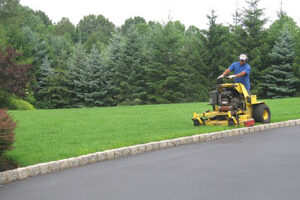 Myth #2: It’s ok to cut the grass very short.
Myth #2: It’s ok to cut the grass very short.
Reality: Most landscape professionals advise against cutting more than one-third of the grass leaf at a time. Mowing at a finished cut height of 3 to 3.5 inches throughout the summer is generally recommended. The lawn will need less water, will be more resistant to weeds and will have a deeper, greener color. Use a sharp mower blade to prevent tearing grass blades. A crisp and clean cut will help prevent a “brown tip” appearance.
Myth #3: It’s best to water your lawn every day.
Reality: Watering your lawn every three days is better than daily watering. Deep, rather than shallow watering of your lawn is recommended to nurture the roots. The equivalent of an inch of water applied in two watering’s each week is best for your lawn.
Myth #4: If you want to replace your lawn, do it in the spring.
Reality: The best time to sow seed is in the late summer and early fall. This is when soil temperatures are warmer promoting seed germination. Air temperatures are more consistent at this time and highly competitive weeds, like crabgrass, are at the end of their life cycle.
Myth #5: Early spring is the best time to fertilize the lawn.
Reality: Different species of grass prefer nutrients at different times of the year. Be sure to use the correct fertilizer, at the right rate, at the right time, and in the right place. A slow-release fertilizer allows for more even and consistent feeding over a longer period of time than a quick-release fertilizer. Remember to use fertilizers responsibly by cleaning up any that lands on streets, sidewalks or driveways where they can be washed into lakes, ponds, rivers and streams.
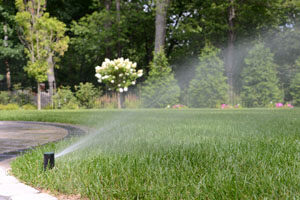 Myth #6: A garden hose is more cost efficient than installing an irrigation system.
Myth #6: A garden hose is more cost efficient than installing an irrigation system.
Reality: Many landscape professionals recommend installing an irrigation system with smart controllers which have sensors that water when needed. Smart irrigation can offer a cost savings of 15–20 percent on water bills. Converting irrigation spray nozzles to the larger rotating nozzles will spread heavy droplets of water at a slower pace, making them more effective.
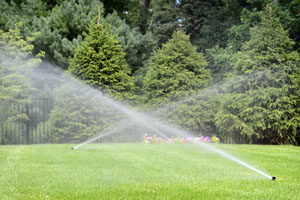 Myth #7: You have to irrigate to have a healthy and beautiful lawn.
Myth #7: You have to irrigate to have a healthy and beautiful lawn.
Reality: Grasses are built to endure short periods of drought by entering a state of dormancy. When temperatures and moisture levels are at their extreme, the growing point of the grass plant, the crown, will shut off the grass blades, turning them brown. When the drought is not extended, once the heat and stresses have gone, the crowns will begin to send up new shoots. There’s nothing wrong with irrigating to avoid dormancy, but allowing your lawn to go dormant for a couple of weeks in the summer is just fine too.
For more helpful tips on taking care of your lawn and landscape, or to get advice on how to hire a landscape professional, visit our blog.
Source: NALP
Blog post edited by Michael Kukol for Northwest Jersey region

